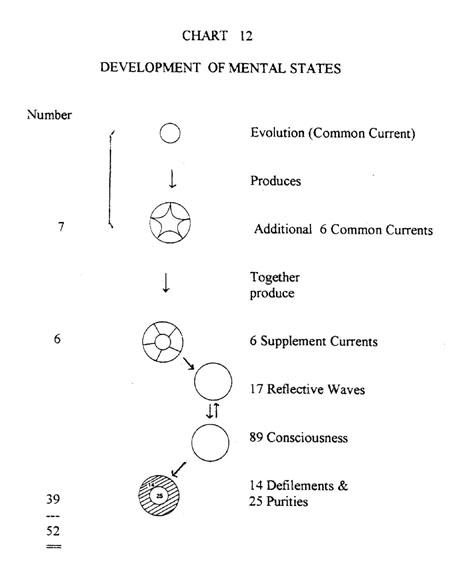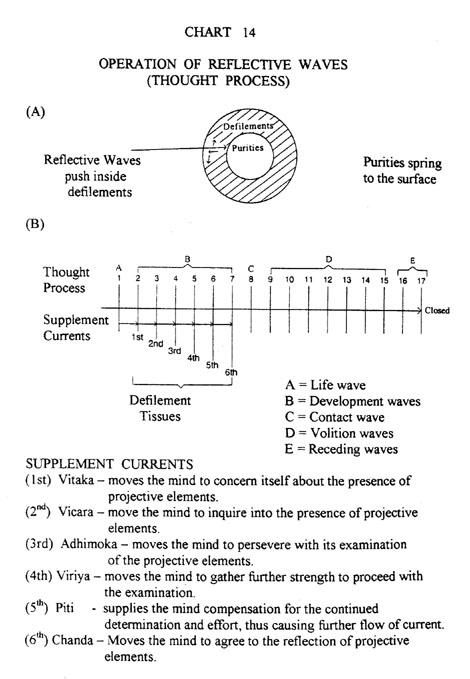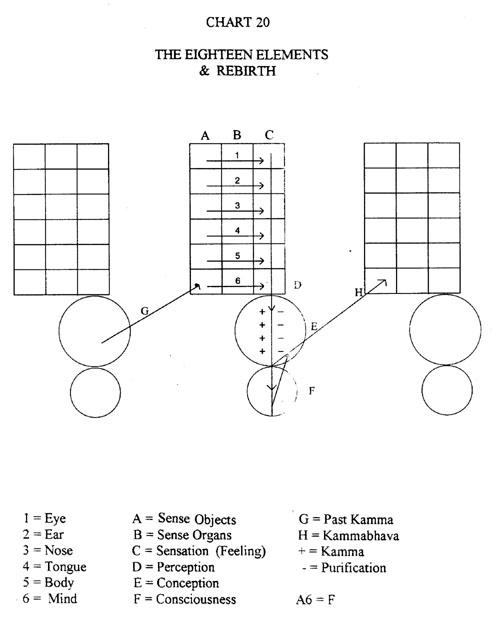


BIRTH AND DEATH OF UNIVERSES
| 1 | Control force of units of mind decreases |
| 2 | Quantity of units of abstract matters held in control decreases |
| 3 | The planets and stars lose their strength to keep together various substances |
| 4 | More substances radiate into space |
| 5 | The conditions on the planets will become increasingly difficult |
| 6 | Harsh climates followed by scarcity of food makes the beings in the universe violent and cruel |
| 7 | Increase in cruelty among the beings reduces their strength of evolution of mind |
| 8 | Continue to deteriorate. Many beings die and
disappear. Less beings arrive to settle |
| 9 | Lapse of time. Beings on this earth reduced to a small number |
| 10 | A period of drought with intense heat. Rivers dry up and crops fail. Most remaining beings die and disappear. |
| 11 | Inter-stellar cloud of water vapor. |
| 12 | A second drought and all flood water evaporated. |
| 13 | Oceans dry up. |
| 14 | Earth comes within orbit of 7 suns. No water. Earth burns up. |
| 15 | All the stars and planets burn up |
| 16 | Remaining units of abstract matter |
| 17 | After long lapse. Units of mind with
defilement burned up, |
| 18 | Universes grow, matters decay and die and so on. |
THE CYCLE REPEATS














